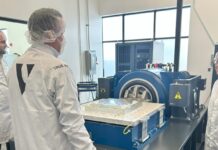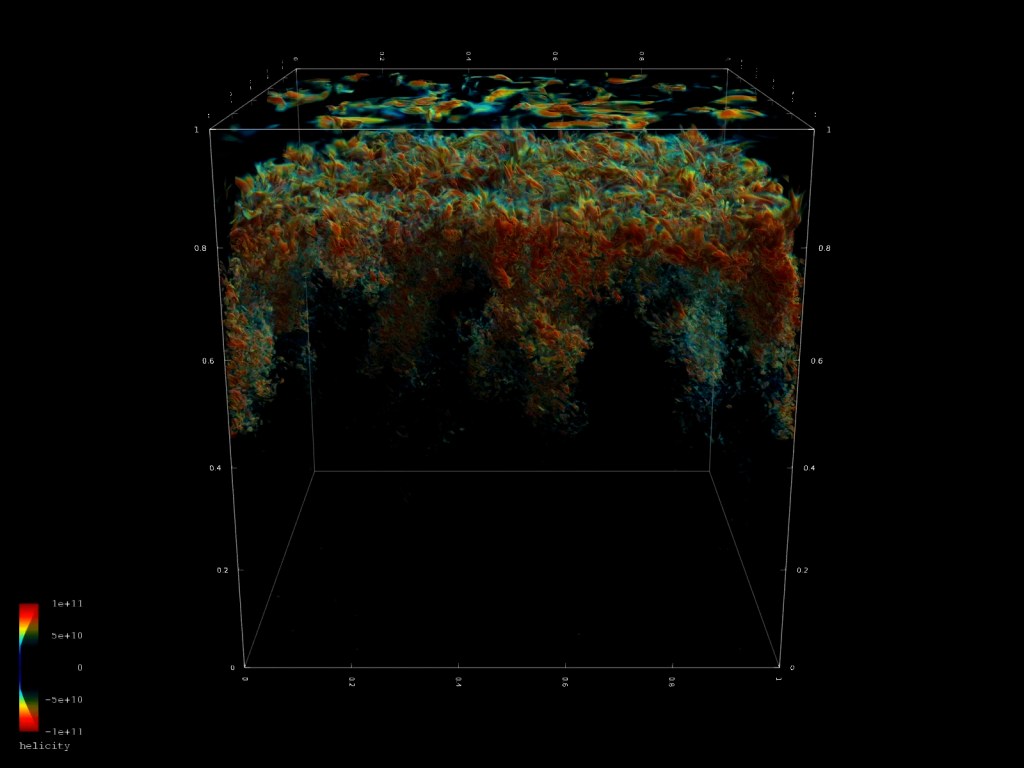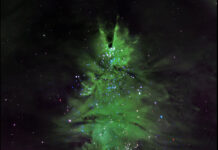Our Sun Takes Center Stage in a Captivating 3D Simulation
NASA’s latest breakthrough in heliophysics showcases the Sun as it has never been seen before. Utilizing advanced 3D simulation technology, scientists have managed to illustrate the tumultuous and dynamic nature of our star in great detail. This simulation not only helps in visualizing the Sun’s surface but also aids researchers in understanding the complex motions within its upper layers. This innovative project is a significant step forward in solar research, providing insights that may lead to more accurate predictions of solar activities.
The simulation captures the Sun’s turbulent flows, where the most intense twisting motions are depicted in bright, saturated reds. These motions are indicative of vigorous upward or downward movements. Clear areas in the simulation represent zones with slower flows and minimal twisting. This visualization is more than just a mesmerizing display; it is a tool for researchers to decode the Sun’s behavior, which can have profound implications on Earth’s space weather conditions.
Understanding Solar Turbulence
To appreciate the significance of this simulation, one must first understand the concept of turbulence. In simple terms, turbulence refers to chaotic changes in pressure and flow velocity within a fluid. In the case of the Sun, this turbulence is observed in its plasma, contributing to the generation of solar winds and magnetic fields. By simulating these flows, scientists can better predict solar storms, which can disrupt satellites, communication systems, and even power grids on Earth.
The detailed visualization of these turbulent flows is crucial as it provides a clearer picture of the Sun’s magnetic field generation process. A better understanding of this process is essential for predicting solar flares and coronal mass ejections, which are significant solar phenomena that can have direct effects on Earth.
5 Unexpected NASA Heliophysics Discoveries Unrelated to the Sun
While the Sun is often the primary focus in heliophysics, NASA has made several surprising discoveries in this field that do not directly involve our star. These findings have expanded our knowledge of space and the universe in unexpected ways.
- Cosmic Rays and Their Origins: One of the intriguing discoveries is the identification of cosmic rays originating from outside our solar system. These high-energy particles travel through space and can affect both satellites and astronauts. Understanding their makeup and origin is crucial for space exploration.
- Magnetic Fields in the Universe: NASA has also uncovered magnetic fields beyond our solar system, revealing the presence of these forces in other parts of the universe. These fields can influence galactic formation and evolution, providing insights into the cosmic environment.
- Heliospheric Boundary: The heliosphere acts as a protective bubble around our solar system, shielding it from interstellar radiation. NASA’s studies on the heliospheric boundary have provided valuable information on how this barrier interacts with cosmic elements.
- Space Weather Patterns: Beyond solar-induced space weather, NASA has discovered patterns influenced by other cosmic phenomena, helping scientists better prepare for potential impacts on Earth’s technological infrastructure.
- Interstellar Medium: Research into the interstellar medium, the matter that exists in the space between stars, has revealed its influence on our solar system’s boundary. This discovery has implications for understanding the universe’s structure and the distribution of matter across galaxies.
These discoveries highlight the broad scope of heliophysics and NASA’s commitment to exploring all facets of space, not just those related to our Sun.
NASA’s Innovative Robots Designed for Ocean Worlds
NASA’s quest to explore the mysterious subsurface oceans of icy moons has led to the development of specialized robots capable of operating in these extreme environments. These robots, designed to swim in the subsurface oceans of celestial bodies like Europa and Enceladus, represent a major leap in robotic technology.
The Challenges of Ocean World Exploration
Exploring the oceans of other worlds presents unique challenges. These environments are often hidden beneath thick ice, requiring robots that can drill through ice and then navigate underwater. The conditions are harsh, with extreme pressures and temperatures that can damage conventional equipment.
To overcome these challenges, NASA has developed prototypes that are not only robust but also highly autonomous. These robots are equipped with advanced sensors and navigation systems, allowing them to map and analyze their surroundings independently.
The Potential Discoveries
The exploration of these ocean worlds is driven by the potential to discover signs of life. These subsurface oceans could harbor conditions suitable for life, offering a new frontier in the search for extraterrestrial organisms. If successful, these missions could redefine our understanding of where life can exist in the universe.
The robots’ ability to gather data and samples from these environments will be crucial in determining their habitability. This exploration could provide answers to some of the most profound questions about life beyond Earth.
Conclusion
NASA’s advancements, from capturing the Sun’s dynamic movements in a groundbreaking simulation to exploring the unknowns of icy moons with innovative robots, underscore the agency’s role at the forefront of space exploration. These efforts not only enhance our understanding of the solar system but also pave the way for future discoveries that could have far-reaching implications on our knowledge of the universe.
For more information on these topics and further updates from NASA, you can visit their official website. These developments continue to inspire and inform, showcasing the endless possibilities of what we can achieve through science and technology.
For more Information, Refer to this article.


































